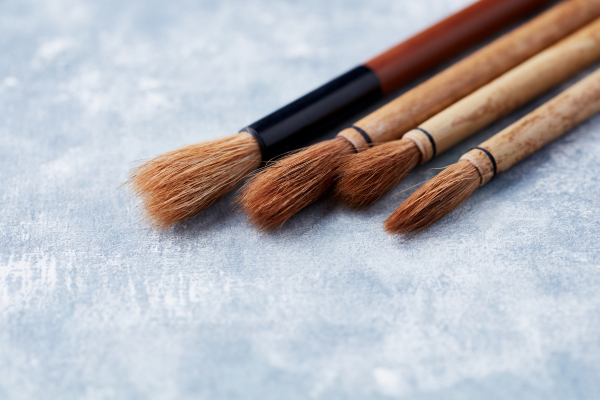Introduction to Japanese Painting and Sumi-e
Japanese painting has a long history and tradition, and one of the most prominent forms is Sumi-e. This monochromatic painting technique uses black ink and focuses on capturing the essence of its subject with simple and subtle brushstrokes. If you are interested in exploring the world of Sumi-e and learning how to master this art form, you are in the right place. In this blog post, we will uncover the key techniques of Sumi-e and provide you with practical tips to get you started on your artistic journey.
Origin and Meaning of Sumi-e
El Sumi-e, también conocido como pintura de tinta, se originó en China y se popularizó en Japón durante los siglos XIV y XV. En esta forma de expresión artística, se utiliza una tinta negra especial, hecha de hollín de pino y pegamento animal, y se aplica con pinceles de pelo de animal en papel de arroz o seda. El objetivo principal del Sumi-e es capturar la esencia de su sujeto, ya sea un paisaje, una flor o un animal, con simplicidad y elegancia.
Tools and Materials for Japanese Painting
Before you begin your journey into Japanese painting and Sumi-e, it is important to familiarise yourself with the tools and materials needed. These include:
Brushes
Brushes made of animal hair are essential for Sumi-e. Each type of hair provides different effects and textures, allowing artists to create unique strokes and details.
Sumi ink
Sumi ink, made from charcoal, is the heart of Japanese painting. Available in stick or liquid form, Sumi ink offers a wide range of shades that vary according to the dilution and the amount of water used.
Washi paper
Washi paper, handmade from plant fiber such as bamboo or rice, is the traditional medium for Sumi-e paint. Its soft and absorbent texture allows the ink to adhere in a unique way, creating stunning visual effects.
Essential Sumi-e Techniques
Ink strokes
Ink strokes are the basis of Sumi-e and allow you to create sharp lines and contours. Practicing the pressure and speed of the brush will help you to control the intensity of the strokes and achieve different effects.
Using White Space
The white space, known as “ma”, is an integral part of Sumi-e. By leaving areas unpainted, it creates balance and a sense of harmony in the composition. The white space allows the viewer’s mind to complete the image and immerse itself in the suggested beauty.
Exploring Themes in Japanese Painting
Nature and Landscapes
Nature and landscapes are common themes in Japanese painting. Trees, flowers, rivers and mountains are depicted in simple yet expressive strokes, capturing the essence and beauty of nature in its purest form.
Animals and Wildlife
Japanese painting also includes the depiction of animals and wildlife. From graceful birds to moving fish, these subjects are painted with a focus on energy and movement, capturing fleeting moments in nature.
Characters and Human Figures
Although less common in traditional Japanese painting, human characters and figures can also be explored. In this case, the aim is to capture the essence and emotion of the subjects in a simple but evocative way.
Resources and Sources of Inspiration
On your way to mastering the art of Sumi-e and Japanese painting, it is useful to have resources and sources of inspiration. Here are some recommendations:
Sumi-e Books and Manuals
Explore books and manuals dedicated to Sumi-e to gain a deeper understanding of techniques and styles. These works often present step-by-step examples and provide practical tips to improve your skills.
Japanese Art Galleries and Museums
Visit galleries and art museums exhibiting Japanese painting and Sumi-e. These visits will allow you to appreciate the masterpieces and gain inspiration from the featured artists.
Community and Painting Workshops
Join online communities or attend Japanese painting workshops to connect with other Sumi-e enthusiasts and learn from their experiences. Sharing ideas and receiving feedback will help you grow as an artist.
In conclusion, Japanese painting techniques, especially the art of Sumi-e, offer a unique and fascinating form of artistic expression. Through the use of brushes, ink and washi paper, you can immerse yourself in this ancient art and explore the beauty and simplicity of nature. With practice and dedication, you can master the essential techniques of Sumi-e and create works that reflect your own vision and style – go ahead, explore the wonderful world of Japanese painting and let your creativity flourish!



